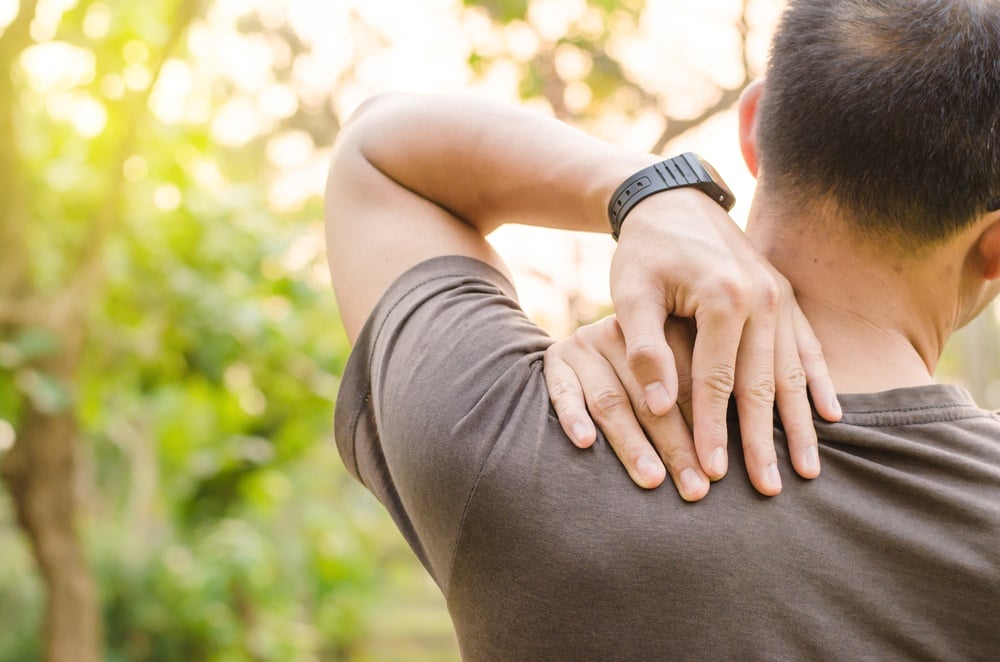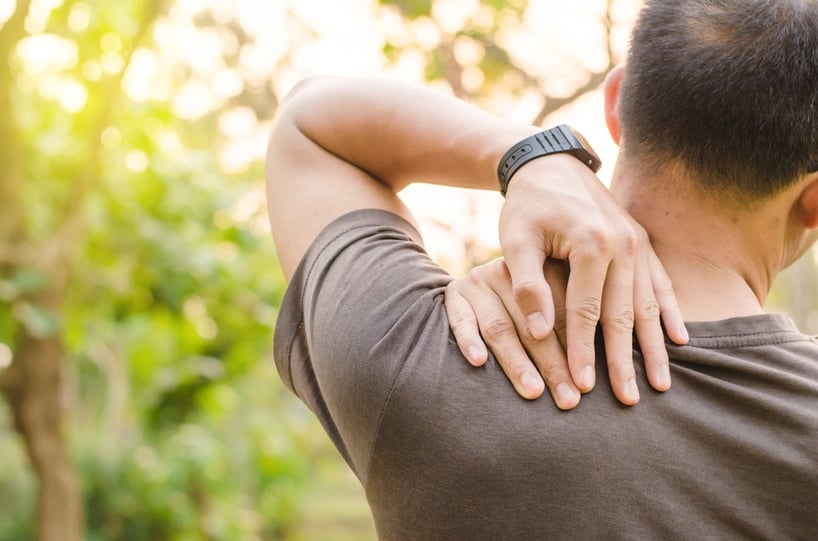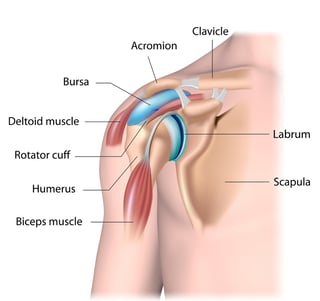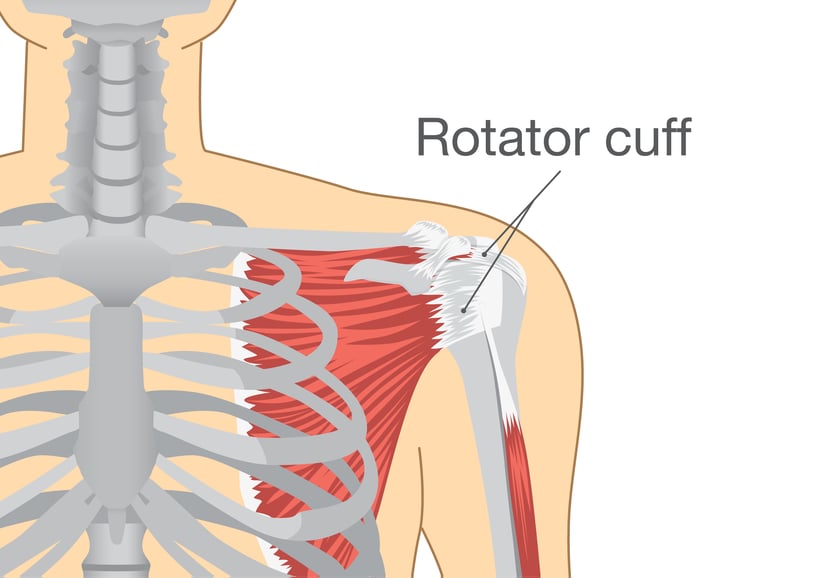Common Sports Injuries Involving the Shoulder
September 1st, 2017 | 5 min. read


The upper body of a human being has evolved for dexterity and flexibility, rather than strength. Our arms, wrists, and hands are excellent at all tasks involving the fine, delicate manipulation of lightweight objects.
In contrast, the lower half gives our bodies durability, strength, and endurance. Although lacking the refined control of the arms, our legs are capable of safely doing the endless daily repetitive motions of walking without wearing out. The legs and hips contain the body’s largest bones and strongest muscles, capable of providing enormous lifting and locomotive power.
This differentiation between the upper and lower parts of the human body may be considered the basic reason that so many sports injuries involve the shoulders.
Why Do So Many Sports Injuries Involve the Shoulder?
In virtually all sports, the shoulders are disproportionately called upon to perform feats of strength, speed, and endurance—feats for which they are not especially well-suited.
For example, a baseball pitcher is required to throw a five-ounce baseball as hard as he can, as often as 300 times a day. Gymnasts support their whole body weights by their arms for hours on end. And football players endure the shock of repeated heavy impacts to their shoulders (as well as heads and necks) for their whole careers.
Such constant stress is far better suited to the thick, heavy structures of a person’s lower body. Unfortunately, the only sport that takes advantage of this aspect of human physiology is soccer (and possibly hacky-sack).
All other sports place inordinate physical demands onto the human shoulder—which, thanks to its remarkable mobility, is an inherently unstable structure. This makes the shoulder far more vulnerable to injury than any other joint.
The Anatomy of the Shoulder
The shoulder is a ball-and-socket joint. The upper arm bone (humerus) is topped with a ball-like structure, which fits precisely into a shallow, cup-shaped socket in the shoulder blade (scapula). The labrum, a ring of tough cartilage, lines that socket, giving the ball of the humerus a bit more depth in which to nestle.
into a shallow, cup-shaped socket in the shoulder blade (scapula). The labrum, a ring of tough cartilage, lines that socket, giving the ball of the humerus a bit more depth in which to nestle.
Surrounding the joint is a kind of protective sleeve of tissue called the joint capsule, comprised in part of the ligaments connecting the bones together and the tendons that make up the rotator cuff.
Most sports injuries involving the shoulder result in damage to the connective tissues: the labrum, ligaments, and tendons. Issues with these components of the shoulder are far more common than broken bones and bruised muscles, due to the high-force, high-repetition activities required by athletics.
The most common types of major shoulder injuries related to sports are:
- Dislocations
- Bone Fractures
Minor sports-related shoulder injuries include:
- Sprains
- Strains
- Inflammation
- Muscular Imbalances
Major Sports Injuries Involving the Shoulder
Dislocated Shoulder or Dislocated Acromioclavicular (ACJ) Joint
A dislocation is the partial or complete separation of two bones. In the shoulder joint, these are the humerus and scapula; in the acromioclavicular or ACJ joint, it is the clavicle (collarbone) and the scapula. The victim of a dislocated shoulder will feel and hear a “pop” as the ball-shaped bone at the top of their upper arm literally “pops” out of its normal socket in the shoulder.
At best, the humerus can be more-or-less easily pushed back into place inside the labrum, which lines the shallow socket in the scapula much like a coffee filter lines the inside of a coffeemaker basket. At worst, the damage caused by the bone “popping out” of its socket will not only tear the cartilage of the labrum, but also damage the tendons of the rotator cuff, and even the surrounding muscles and ligaments of the shoulder joint capsule.
This type of injury most commonly occurs in contact sports in which athletes repeatedly fall on their shoulders, or are subjected to hard, repeated impacts—for example, the tackling and upper-body grappling that can occur in American football.
Repeated dislocations will worsen the damage to the socket, making a recurrence much more likely. They may even weaken the already-structurally-unstable shoulder joint.
Rotator Cuff Tears

The rotator cuff is made up of several tendons; together they provide the remarkable mobility of the shoulder. A repetitive stress injury (RSI) or overzealous, overpowered arm swings may tear or rip any of these important tendons, sometimes more than one.
Any sport that requires repetitive overhand motions presents a danger to the rotator cuff. Athletes who are particularly vulnerable to a rotator cuff tear include swimmers (like swimmer's shoulder), tennis players, and baseball pitchers.
In addition, those participating in sports that require explosive, powerful motions are also candidates for a torn rotator cuff, including weightlifters, rock climbers, and volleyballers. Typically, these injuries are characterized by pain, weakness in the shoulder, reduced range of motion, and stiffness.
SLAP Lesions or Tears
Superior Labral Antero-Posterior (SLAP) tears are rips in the ring of cartilage (labrum) that runs around the shoulder socket. Just like rotator cuff tears, SLAP tears are more common in sports with lots of overhead throwing, heavy lifting and tackling.
A SLAP tear tends to develop over time from repetitive, overhead motions, such as throwing a baseball, playing tennis or volleyball, or swimming. It may also occur from a direct impact to the shoulder, such as that caused by falling or being tackled to the ground.
Telltale symptoms include a loss of “power” in your shoulder; a feeling of looseness in the shoulder joint, almost as if it were about to slip out; pain accompanying overhand motions, such as throwing a baseball; a decrease in your range of motion; and an unpleasant sensation (and possibly accompanying sounds) of clicking, grinding, or popping in your shoulder.
Bone Fractures
Actual cracks and breaks in the scapula, or shoulder bone, are rare. Bones are very strong and can handle a surprising amount of trauma. In addition, the tough, flexible tissues surrounding the shoulder joint are in part evolved to protect the bone from breakage: the tendons, cartilage, and ligaments holding the bones to each other will generally stretch and break long before a bone can crack.
However, in high-velocity crashes and falls from high heights, the soft tissues cannot do their job of protecting the bones from breakage. Fractures in the shoulder are difficult to treat, due to the position of the bones making it hard to immobilize with hard casts in order to heal properly.
Minor sports-related shoulder injuries
- Contusions/Bruising
- Bursitis/Bone Spurs
- Muscular Imbalances
Sprains (ligament damage)
If the upper arm bone is pulled hard enough to yank it out of its normal position, but not hard enough to dislocate, the result may be a stretched ligament—a sprain. Ligaments connect the bones of the skeleton to each other, and are flexible enough to take some stretching without damage.
Sprains are often graded in three levels, with 1 being the most minor (some pain and swelling) and 3 being a major-level sprain (significant swelling, loss of function, pain). They tend to cause pain for longer periods than dislocations, despite representing significantly less damage to the shoulder.
Strains (muscular damage)
Overworking, overstretching, and overuse of the shoulder muscles may result in muscle strain. These are normally minor tears of muscle fibers, such as those caused by lifting too-heavy weights. The most serious type of strain is known as a biceps pulley lesion, in which the muscle actually rips off the tendon attaching it to the shoulder and arm bones.
Contusions/Bruising
A contusion is the medical term for a bruise, a breaking of blood vessels under the skin caused by an impact injury. The leaking blood vessels result in the classic “black and blue” color of a contusion, and results in the affected area literally swelling in size with fluid.
Impingement/ Bone spurs
The repeated use of the arm in overhead motions may cause tiny, bony “spurs” to form in the shoulder. These spurs will “impinge,” or rub against, the rotator cuff, resulting in a conditions variously known as Bursitis, Impingement Syndrome, Rotator Cuff Tendinitis, or Supraspinatis tendonitis. Older athletes are more at risk of developing bone spurs.
Muscular Imbalances
Also known as Swimmers Shoulder or Thrower’s Shoulder, this condition occurs when the body’s normal musculature is thrown out of balance by—once again—repeated, forceful, overhand motions. For example, if the muscles in front of the shoulder stretch, as those in the back tighten and shorten, the shoulder joint will no longer “glide” properly, resulting in the misalignment of the labrum and rotator cuff. Over 60% of all swimmers will experience some form of muscular imbalance during their career.
Conclusion
Being aware of these common sports-related shoulder injuries and knowing their symptoms may encourage you to seek medical treatment sooner; early treatment intervention could result in a better outcome and earlier return to practice and games.
Awareness of common shoulder injuries and how they occur is also the first step in prevention. Don't let yourself (or your student athlete) get sidelined this season! Proper form, strengthening and stretching regimens, and safety measures can help you to stay healthy.
If you or a loved one thinks they may have a sports injury, call Coastal Orthopedics in Corpus Christi today at (361) 994-1166.
Article written by: Rob Williams, MD
Dr. Williams has been practicing orthopedic surgery in Corpus Christi since 1998. After graduating from Texas Tech hereceived his medical degree from the University of Texas at San Antonio. At the prestigious Campbell Clinic located at the University of Tennessee, Dr. Williams completed not only an Orthopedic Surgery Residency, but an additional year of Fellowship Training in Spine Surgery. Dr. Williams is dedicated to creating an excellent patient experience in the office or in the surgery suite.

